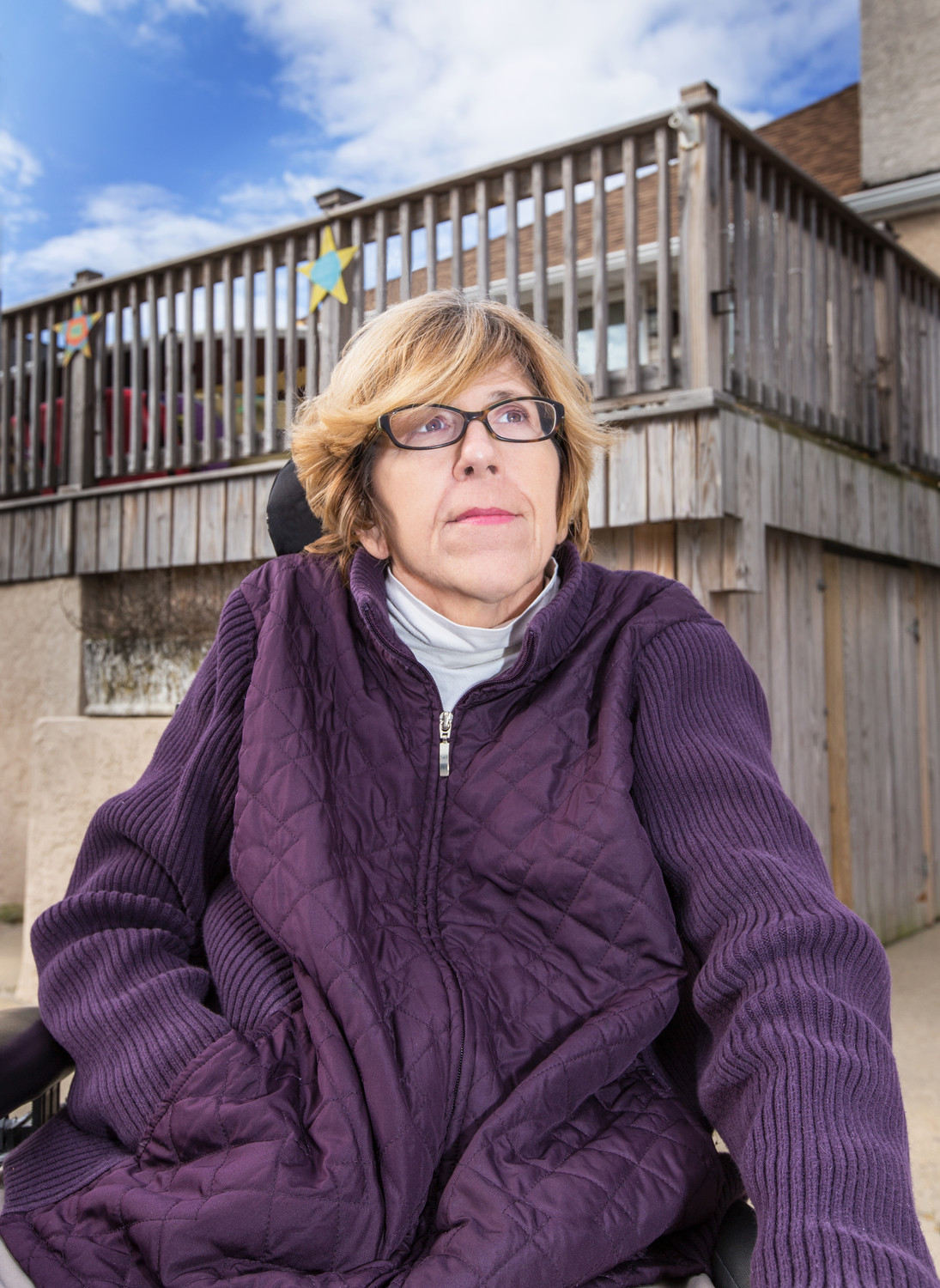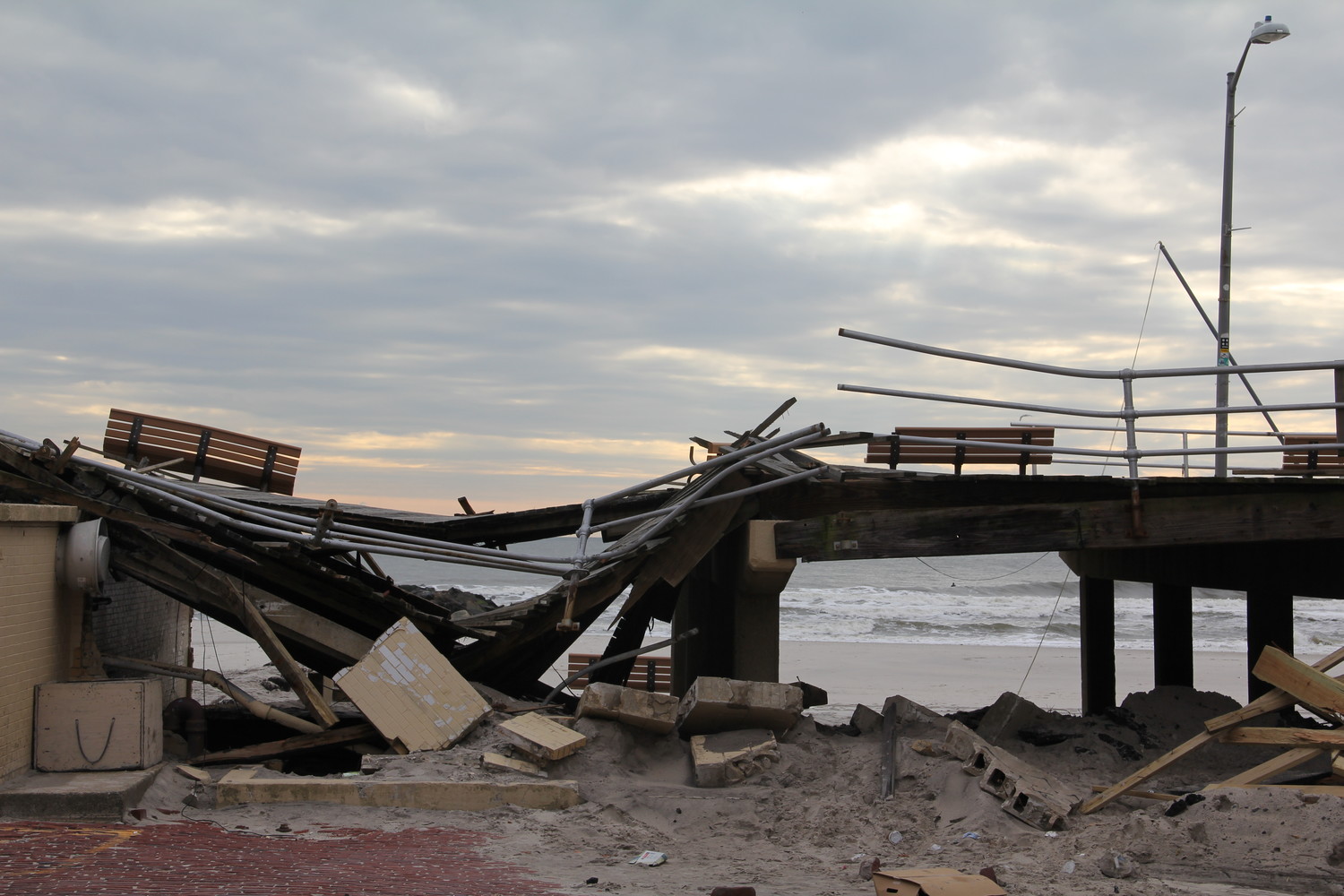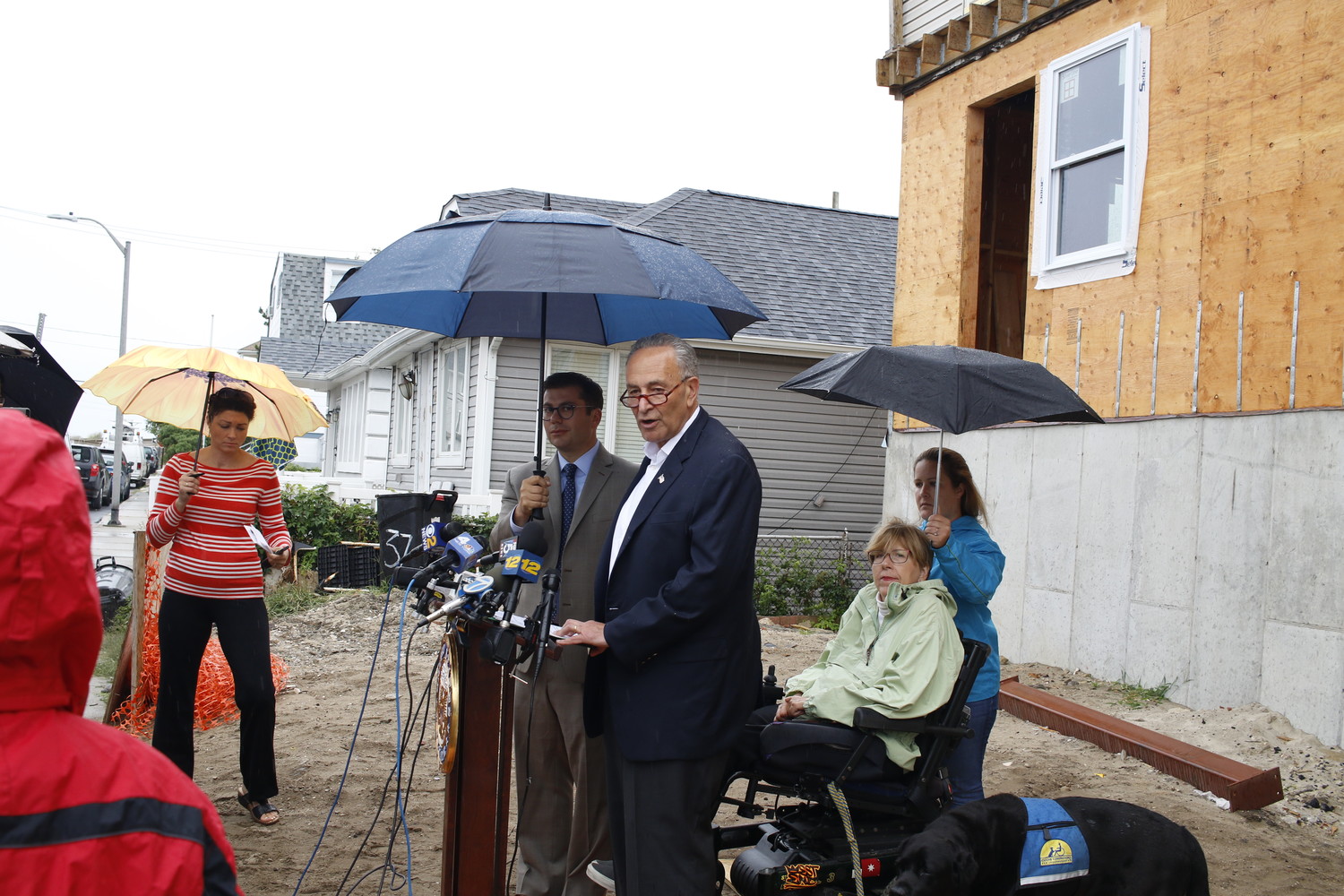Hurricane Sandy, five years on
Some residents are still displaced, rebuilding
“Finding a place where I can rent in Long Beach was — and still is — very difficult,” said Liz Treston, who has been living in different rental homes in the West End for more than a year while her Wyoming Avenue home is being elevated.
Treston, who has lived in three different rentals, added that she has struggled to find wheelchair-accessible buildings while she rebuilds. “During the summer, I had a rental where I took a shower outside because I couldn’t get into the bathroom,” she said.
Treston is among a number of Long Beach residents who remain displaced while their homes are being rebuilt or elevated five years after Hurricane Sandy. Her home was among the 865 houses that were deemed by the Federal Emergency Management Agency to be substantially damaged, meaning that the cost of repairs would be more than half the appraised value. Those homeowners were told to either elevate or rebuild them.
City officials say that less than 5 percent of residents remain displaced, and a number are still waiting for reimbursement from New York Rising for rebuilding costs that are not covered by their insurance.
“I think that although we’ve come so far, personally and as a city, you look around and there’s still lots of people who are still not home,” said City Council Vice President Anthony Eramo, who, like many residents, emptied his retirement savings to help rebuild his West End home, which was completed in 2014.
On Sunday, the city will mark the fifth anniversary of the storm with a ceremony at Kennedy Plaza in which officials, residents and first responders will reflect and note the progress made since the storm and the challenges that remain.
“You look around the city and you see a federally funded Army Corps project that was decades in the making; $40 million in resiliency funding for projects to protect the bay; and, everywhere you look, homes are being elevated,” said City Manager Jack Schnirman, adding that the boardwalk was rebuilt within a year. “We’ve come so far and made so much progress, and none of it came easy.”
Many have lauded the city’s Building Department and the Residential Rebuilding Assistance Program, saying that Long Beach is ahead of many other municipalities in terms of helping residents rebuild. As of this month, the city said it has issued 356 permits for new homes and 628 permits for elevations since the storm, with 44 permits for new homes and 282 permits for elevations pending.
Earlier this year, the Governor’s Office of Storm Recovery said that of the 11,000 homeowners on Long Island who were initially enrolled in NY Rising, 4,502 were still working on their homes and had not requested final inspections. Nearly 60 percent, however, had completed the work and “closed out.”
In Long Beach alone, a spokeswoman for the governor’s office said on Tuesday that a total of $343 million had been awarded and $252 million dispersed since Sandy, mostly to those who own single-family homes, for whom $217 million was awarded and $186 million was given out.
New Hampshire Street resident Anita Daly, who returned home in July, was among those who were required by FEMA to completely rebuild their houses. She and her husband, Jim Leavitt, evacuated during the storm and stayed with friends in Manhattan, only to return to Long Beach two days later to find their home destroyed.
“It was a disaster area,” Daly recalled. “That was the most frightening thing — not knowing where your friends and family were and coming back to see your house.”
Although she immediately filed for assistance from FEMA and NY Rising, Daly recalled struggling with the agencies’ red tape as well as that of her insurance company. She received a check from FEMA, but said it only covered about a quarter of her rebuilding costs. The majority of the money came from her savings and her husband’s.
“We didn’t sleep for three years,” Daly said, adding that the stress has taken an emotional toll. “All you do is worry.”
“We still have debt from the rebuild, we cleared our [individual retirement accounts] and savings,” she added. “We’re going to have to sell the house to get our pensions back. It’s the ongoing struggle of it all.”
Treston, who opted to elevate her home through NY Rising to avoid hefty flood insurance premiums, had hoped to return home last month. She said that the construction process is now dragging, because it’s difficult to find a contractor who “would do the work with the limited amount of award money” she expects to receive from NY Rising. She added that contractors are also spread thin.
Treston stayed in her house during the storm, after which many residents described a frightening storm surge that flooded the West End in seconds. Many took refuge on the second floor of their homes, only to watch their belongings float away. Treston watched helplessly as water rushed into her home, destroying her possessions and knocking out the electricity.
Afterward she received financial assistance from FEMA, only to be told by the agency two years later that she owed it $4,500 because she was mistakenly overpaid.
“No one ever plotted this out,” she said. “We didn’t expect all this red tape, and five years later, it continues.”
Still, Treston has found the time to give back to the community. Shortly after the storm, she was instrumental in launching Long Beach Community Organizations Active in Disasters, an organization that aims to help residents after natural disasters.
Though she hopes to return home next year, Treston said she might not be able to afford to stay in Long Beach. “I don’t want to have to reinvent my life again in another place,” she said.
“Five years later, and you still have all these people who still aren’t home,” said John McNally, a co-chair of the city’s Community Reconstruction Program planning committee, who stayed in his Michigan Street home during the storm with his wife and their dog. “NY Rising was, and is, confusing and bureaucratic, and I think people would argue that it’s even worse than the storm.”
McNally recalled the night when the ocean water rushed into his basement, creating a 4-foot-deep pool and killing the power and gas. He heard transformers and substations blowing up around the neighborhood and helplessly watched couches float by beneath him.
“The dunes collapsed and washed into the street, and cars were lodged with sand,” McNally said. “The house was shaking and it was very dark. It was a really long night. We were in the ocean for however many hours it was.”
McNally was displaced until 2014, when he and his wife bought a home in the Westholme neighborhood to avoid the high costs that he would incur to rebuild his original home.
He recalled how the community came together to help one another in the days after the storm. “Seeing the best of the human spirit and the community — it was something to be a part of,” he said. “After everything we had gone through, after all the relationships we had made with people in the days immediately after Sandy, there was no other place that we were going to live.”

 47.0°,
Mostly Cloudy
47.0°,
Mostly Cloudy 









